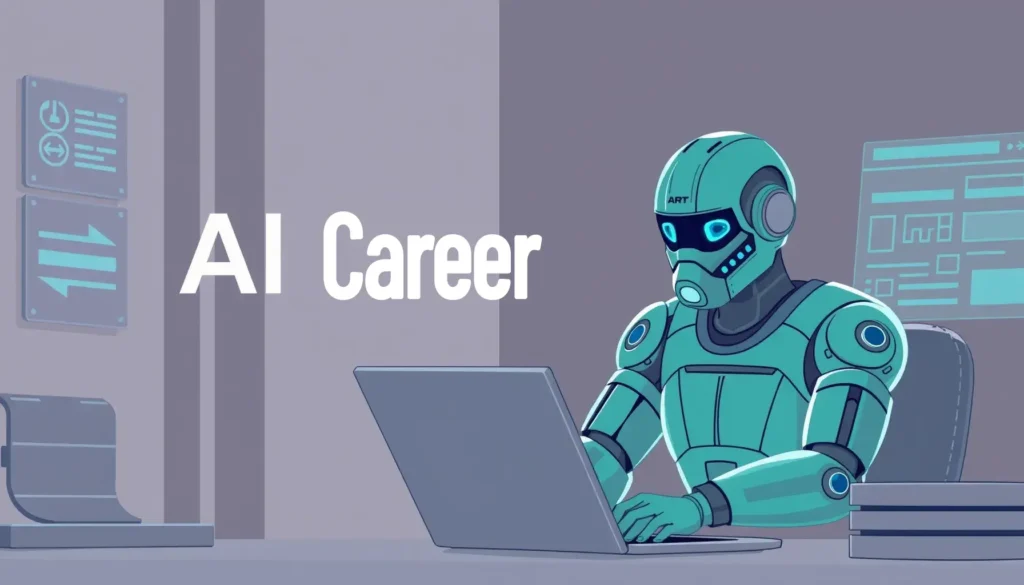AI and Business: Prototyping for Success

Artificial Intelligence (AI) is transforming businesses across the globe. From enhancing customer service to optimizing supply chains, AI’s potential seems limitless. However, before fully integrating AI solutions, companies often start with AI prototyping. This process allows businesses to experiment and test AI applications in a controlled environment. In this article, we’ll explore the intricacies of AI prototyping, including its steps, benefits, challenges, and future trends.
Understanding AI Prototyping
What is AI Prototyping?
AI prototyping is the creation of a preliminary model of an AI system. This model acts as a proof of concept, enabling businesses to test AI solutions’ feasibility before full-scale implementation. Prototypes are designed to be flexible and iterative, allowing for continuous improvement based on feedback and performance metrics.
Benefits of AI Prototyping
First and foremost, risk mitigation is a significant benefit. Prototyping allows businesses to identify and address potential issues early, minimizing risks. Additionally, it is cost-effective. By testing ideas on a smaller scale, companies avoid costly mistakes, ensuring only viable solutions are scaled up. Furthermore, prototypes enable rapid validation of concepts, facilitating faster decision-making and innovation.
Steps in AI Prototyping
Step 1: Problem Definition
The first step in AI prototyping is to clearly define the business problem. This involves:
- Identifying Business Needs: Understanding the specific challenges the business faces.
- Stakeholder Engagement: Gathering requirements from key stakeholders to ensure the solution meets their needs.
Step 2: Data Collection and Preparation
Next, data collection and preparation are crucial steps. Data is the lifeblood of AI. In this step:
- Sources of Data: Identify where data will come from, whether internal databases or external sources.
- Data Cleaning and Preprocessing: Ensure the data is accurate, complete, and formatted correctly for analysis.
Step 3: Model Selection and Training
Following data preparation, selecting the right AI model is crucial. This involves:
- Algorithm Selection: Selecting algorithms that best suit the problem.
- Model Training: Using collected data to train the AI model, adjusting parameters to optimize performance.
Step 4: Building the Prototype
With the model trained, it’s time to build the prototype. This includes:
- Integration: Incorporating the AI model into a prototype system.
- User Interfaces: Designing interfaces that allow users to interact with the prototype effectively.
Step 5: Testing and Validation
Testing and validation are critical to ensure the prototype works as intended:
- Performance Metrics: Evaluating the prototype using key performance indicators.
- User Feedback: Gathering feedback from users to identify areas for improvement.
Step 6: Deployment and Scaling
Finally, successful prototypes can be deployed and scaled up:
- Transition to Production: Moving from prototype to a full-scale solution.
- Scalability Considerations: Ensuring the solution can handle increased demand and complexity.
Tools and Technologies for AI Prototyping
Several tools and technologies facilitate AI prototyping:
- Data Processing Tools: Python, R, SQL
- Machine Learning Frameworks: TensorFlow, PyTorch, Scikit-Learn
- Prototyping Platforms: Jupyter Notebooks, Google Colab, Azure ML Studio
- Visualization Tools: Tableau, Power BI, Matplotlib
Case Studies
Case Study 1: AI in Customer Service
For instance, consider a case study on customer service:
- Problem: Improving response times.
- Solution: A chatbot prototype designed to handle common customer inquiries.
- Outcome: Increased customer satisfaction and reduced workload for human agents.
Case Study 2: AI in Supply Chain Optimization
Similarly, let’s look at supply chain optimization:
- Problem: Managing inventory more efficiently.
- Solution: A predictive analytics prototype to forecast demand and optimize inventory levels.
- Outcome: Reduced operational costs and improved inventory turnover.
Case Study 3: AI in Marketing
Lastly, examine AI’s impact on marketing:
- Problem: Enhancing targeted advertising.
- Solution: A recommendation system prototype to deliver personalized ads.
- Outcome: Higher conversion rates and better customer engagement.
Challenges in AI Prototyping
Despite its benefits, AI prototyping comes with challenges:
Technical Challenges
On the technical side, there are issues like data quality. Ensuring data is accurate and relevant is paramount. Additionally, model accuracy is crucial for building models that perform reliably in diverse scenarios.
Organizational Challenges
Organizationally, businesses often face resistance to change. Overcoming skepticism and fostering a culture of innovation can be challenging. Moreover, there’s a lack of expertise in the field, necessitating the need for skilled AI professionals.
Ethical and Legal Challenges
From an ethical and legal perspective, data privacy is a significant concern. Ensuring compliance with data protection regulations is essential. Additionally, avoiding bias and ensuring fairness in AI models is critical to prevent unfair outcomes.
Best Practices for Successful AI Prototyping
To maximize the benefits of AI prototyping, businesses should follow these best practices:
- Clear Objective Setting: Align prototype goals with overall business objectives.
- Collaborative Approach: Involve cross-functional teams in the prototyping process.
- Iterative Development: Continuously test and refine prototypes based on feedback.
- Robust Data Management: Ensure data quality and integrity throughout the project.
- Ethical Considerations: Implement fair and transparent AI practices.
Future Trends in AI Prototyping
Looking ahead, the future of AI prototyping is bright, with several trends on the horizon:
Emerging Technologies
Emerging technologies such as quantum computing promise faster and more efficient AI computations. Similarly, edge AI is bringing AI closer to data sources, reducing latency and improving performance.
Advancements in Tools
There are also significant advancements in tools. Automated Machine Learning (AutoML) simplifies the model-building process, while enhanced collaboration platforms facilitate better teamwork and communication.
Evolving Business Models
Furthermore, evolving business models like AI-driven innovation encourage businesses to adopt AI for competitive advantage. Additionally, prototyping as a service offers prototyping solutions as a service to other businesses.
Conclusion
In conclusion, AI prototyping is a powerful tool for businesses looking to innovate and stay ahead of the competition. By following a structured approach and leveraging the right tools, businesses can develop effective AI solutions that drive success. As technology advances, the potential for AI prototypes will only continue to grow, opening new opportunities for businesses across industries.
Key Points
Tools and Technologies
| Tool Category | Examples |
|---|---|
| Data Processing Tools | Python, R, SQL |
| Machine Learning Frameworks | TensorFlow, PyTorch, Scikit-Learn |
| Prototyping Platforms | Jupyter Notebooks, Google Colab |
| Visualization Tools | Tableau, Power BI, Matplotlib |
Steps in AI Prototyping
- Problem Definition
- Identifying business needs
- Stakeholder engagement
- Data Collection and Preparation
- Sources of data
- Data cleaning and preprocessing
- Model Selection and Training
- Algorithm selection
- Model training
- Building the Prototype
- Integration
- User interfaces
- Testing and Validation
- Performance metrics
- User feedback
- Deployment and Scaling
- Transition to production
- Scalability considerations





